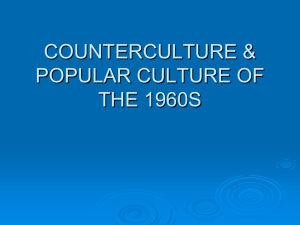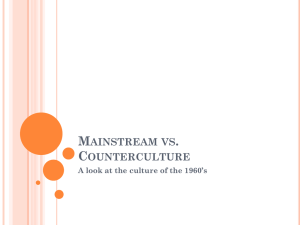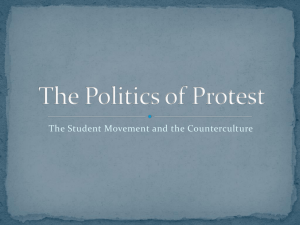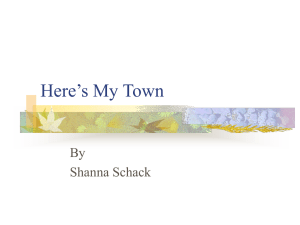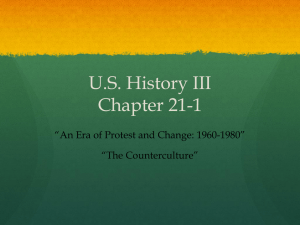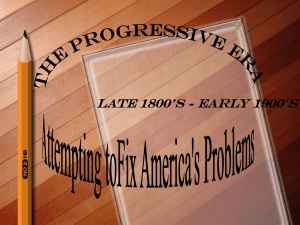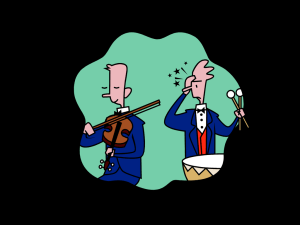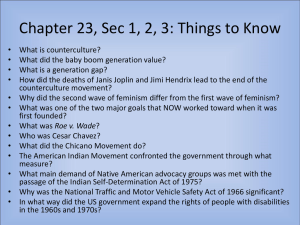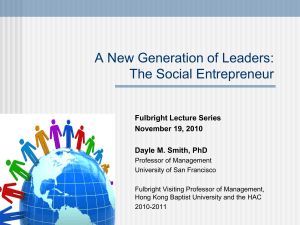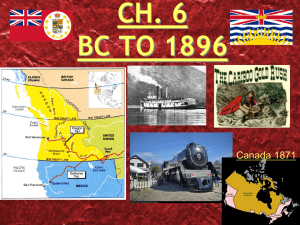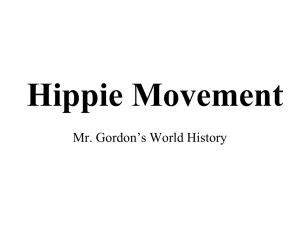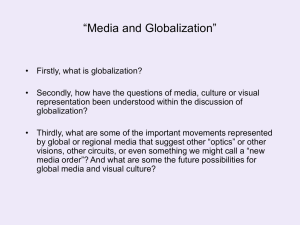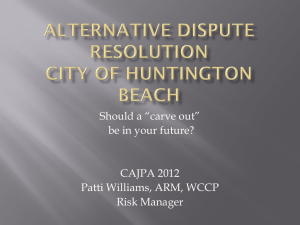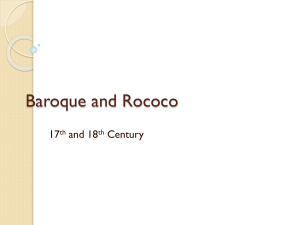Counterculture
advertisement
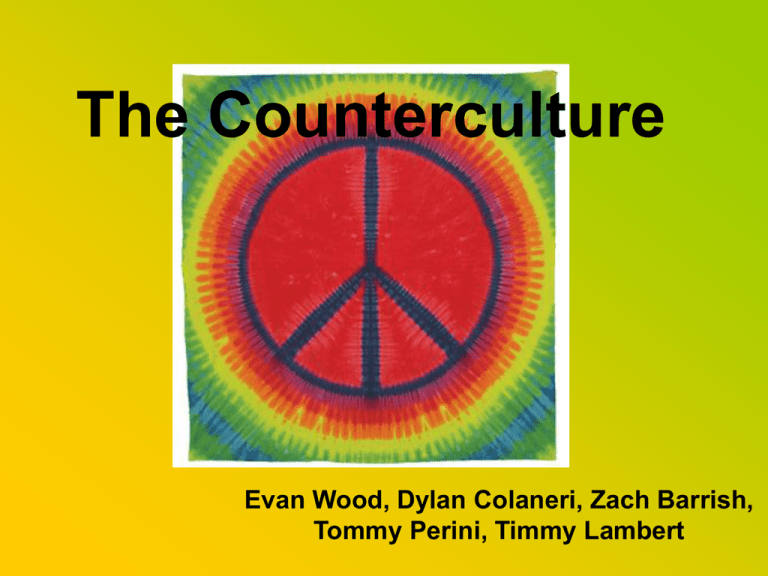
The Counterculture Evan Wood, Dylan Colaneri, Zach Barrish, Tommy Perini, Timmy Lambert Causes of the Counterculture • • • • • • • Many Americans, primarily young, lost faith in the sanctity of the American system The youth and the public at large were looking for new ways to “assert their individuality and independence.” “There was a general feeling that the platitudes of Americanism were horseshit.” – Joseph Heller Sexual norms changed as “the pill” alleviated the fear of pregnancy. William H. Masters and Virginia E. Johnson published Human Sexual Response, which describes the responses that men and women could experience. Art by artists such as Andy Warhol reflected the urge to innovate. Drug use of LSD and other hallucinogenic drugs at universities spread (Timothy Leary), and veterans of Vietnam were experienced with drugs. Cultural Influences in the Counterculture Drug Influences Quic kT ime™ and a dec ompress or are needed to s ee this pi cture. Drug Influences QuickT ime™ and a decompressor are needed to see t his picture. • LSD – Tim Leary did experiments on undergrads • “Tune in, turn on, drop out.” – Merry Pranksters • Converted school bus painted in psychedelic Day-Glo paints, filled is Orange Juice and Acid – Middle-Class College Students took “tabs” • Cocaine Qui ckTi me™ and a decompressor are needed to see this pictur e. – Young professionals began experimenting. • Marijuana --> MOST POPULAR – “joints” of “grass” were passed around at High Schools – Compared to Beer of past generations Goals of the Counterculture A common goal of the counterculture in America was to separate themselves from the typical suburban culture. They wanted to break way from the status quo that was set after the War had ended. By questioning authority figures and the federal government, they tried to find a greater truth and meaning in life. The culture's “spiritual” quest was for inner peace, through raised consciousness, and unity with everyone. Global harmony QuickTime™ and a decompress or are needed t o see this pict ure. Achievements Quic kT ime™ and a dec ompres sor are needed to s ee this pic ture. • Literature such as D.H. Lawrence's Lady Chatterley’s Lover, once considered to be obscene, could not longer be banned. • Ken Kesey’s One Flew Over the Cuckoo’s Nest • Nudity became more common on screen and stage. (Hair) • “Op” painting – Sharply defined geometric figures in clear vibrant colors. • “Pop” painting – Andy Warhol, Roy Lichtenstein, and Jasper Johns • Made ironic comments on American Materialism and taste with their representation of everyday objects • Used spray guns and fluorescent paints to gain effect • Some seemed like giant newspaper photographs QuickTime™ and a decompressor are needed to see t his picture. “Op” “Pop” Qui ckTi me™ and a decompressor are needed to see this pictur e. Qui ckT ime™ and a dec ompress or are needed to s ee this pic ture. QuickTime™ and a decompressor are needed to see t his picture. QuickTime™ and a decompressor are needed to see this picture. QuickTime™ and a decompressor are needed to see this picture. Quick Time™ an d a d eco mp res sor ar e n eed ed to s ee this pic tur e. Qui ckTi me™ and a decompressor are needed to see thi s picture. QuickTime™ and a decompressor are needed to see this picture. Quic kT ime™ and a dec ompress or are needed to s ee this pi cture. Qui ckTime™ and a decompressor are needed to see this pictur e. Counterculture Strategies for Achieving Counterculture Goals •“Hippies” wanted to affirmed their individuality and independence from traditional American norms by men letting their hair grow and sprouting beards; both men and women wore jeans, muslin shirts, and other untraditional clothing •Stressing spontaneity, some members of the Counterculture movement rejected traditional marriage customs and gravitated to communal living •Women took oral contraceptives which opened the door to free sexual experimentation •To free the mind many used hallucinogenic drugs •New music preached the same ideals as these cultural changes The Development of the Counterculture • Although the hippie movement died out by the late 1970s, many aspects of their culture and goals continued. • -The music of the counterculture has a large fan base, even today, and the style of music has influenced many popular genres of music. • -Their hope for peace was represented in antiwar demonstrations • -Their deviation from societal norms and unusual dress is also affluent in the British punk movement during the 70s and 80s
